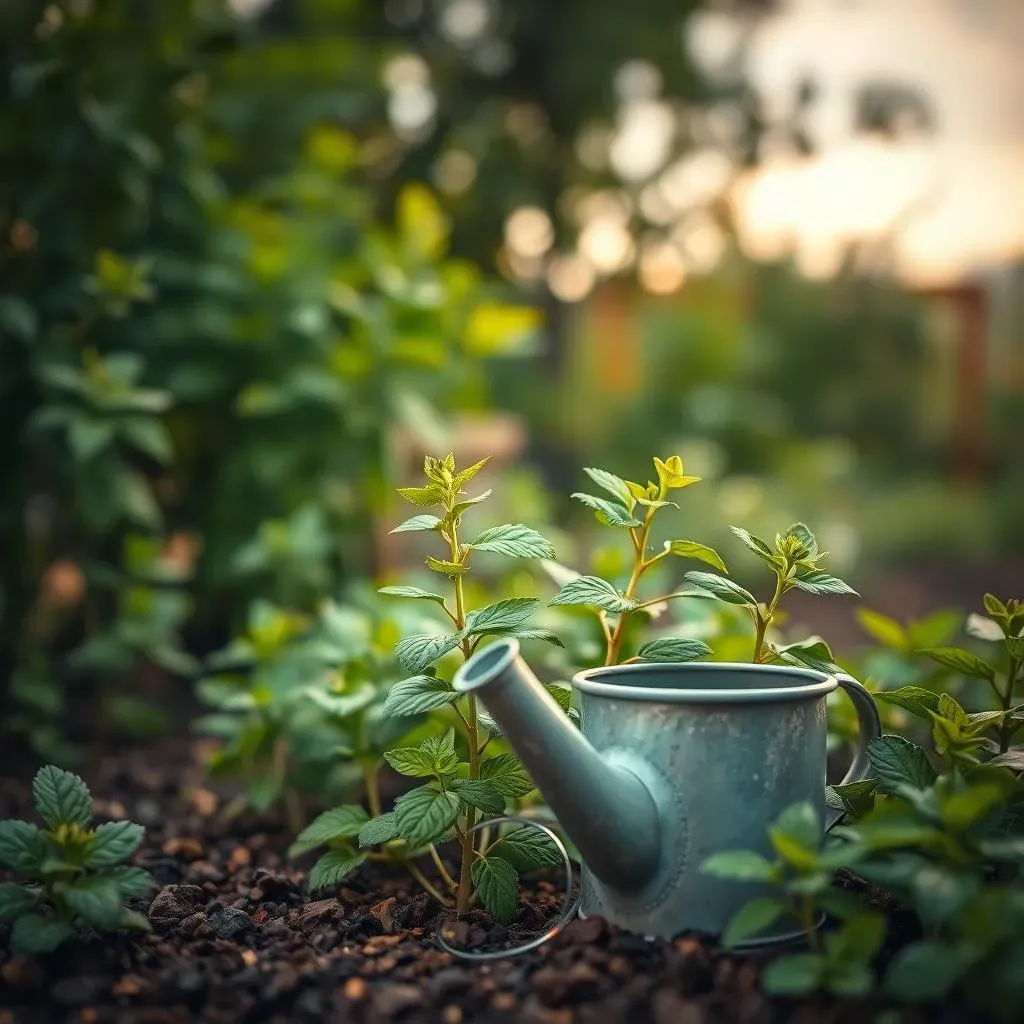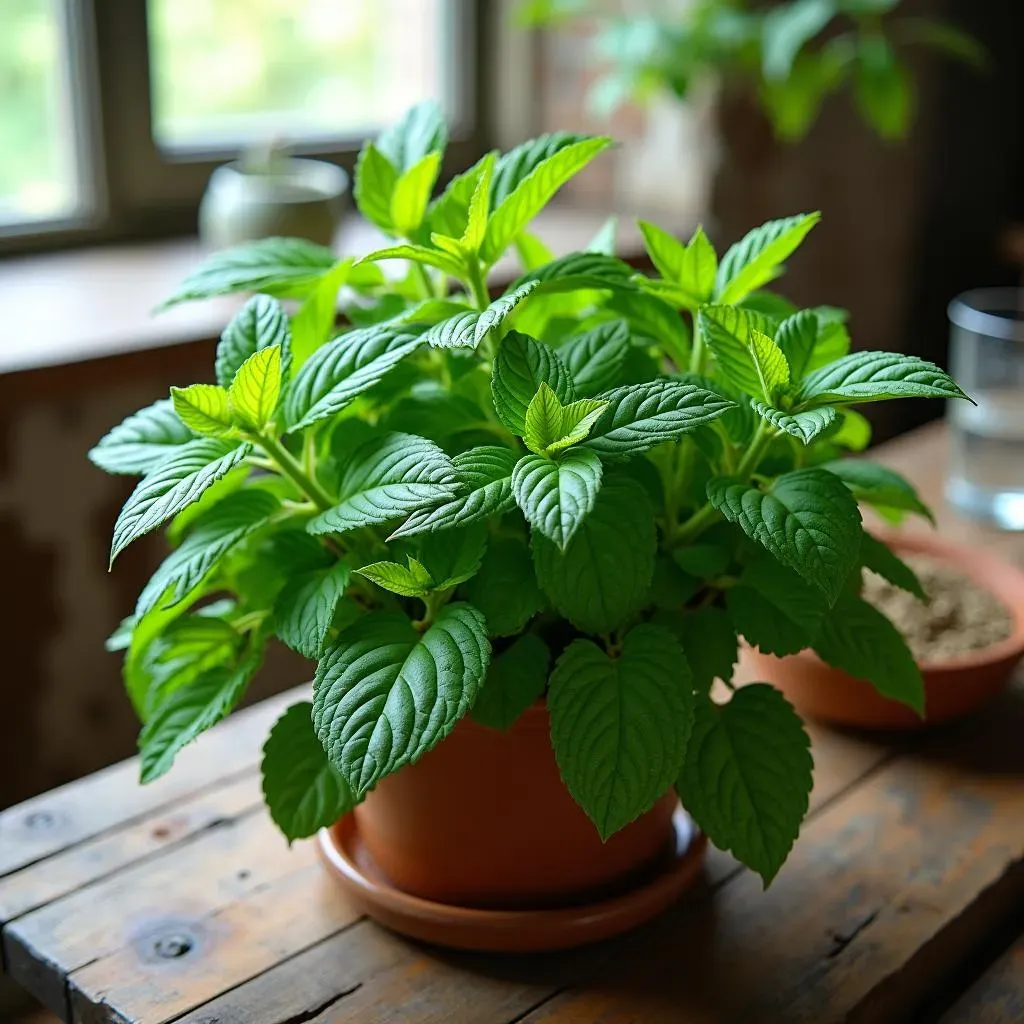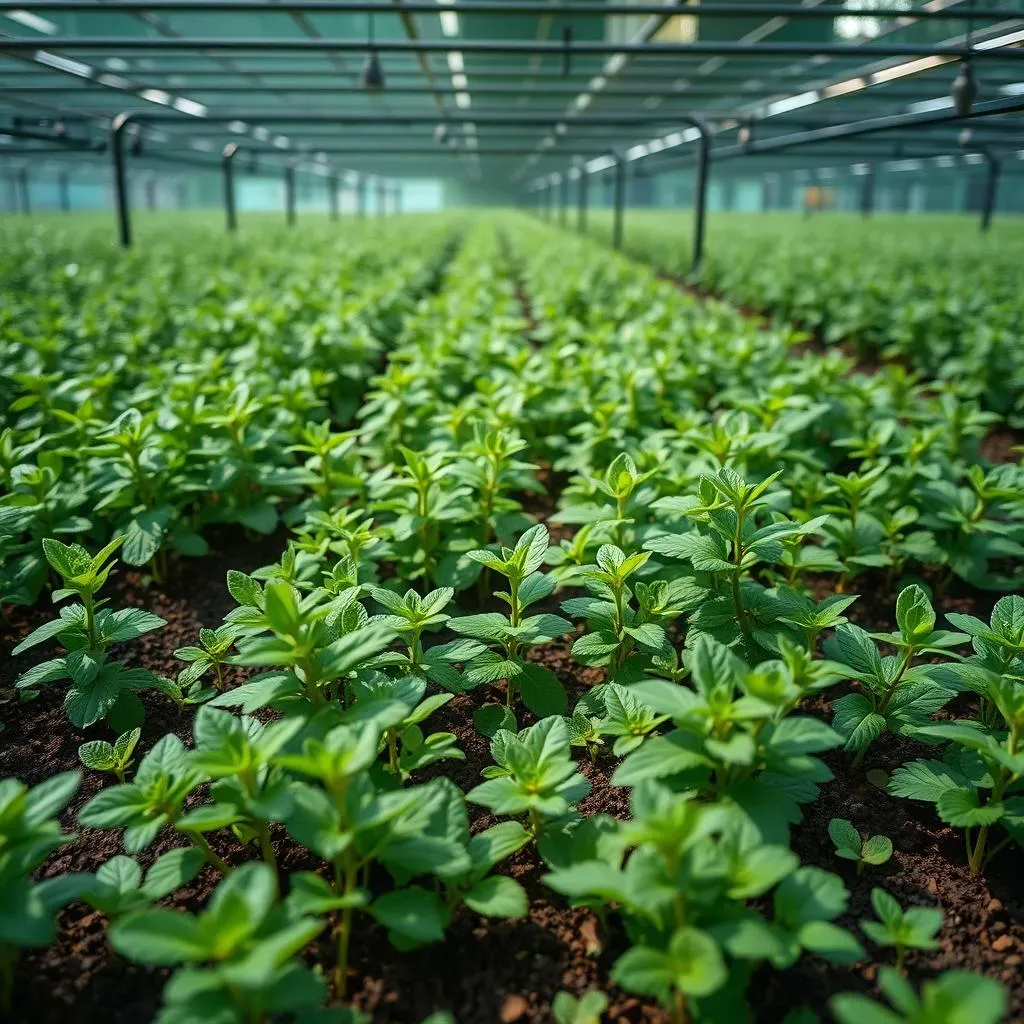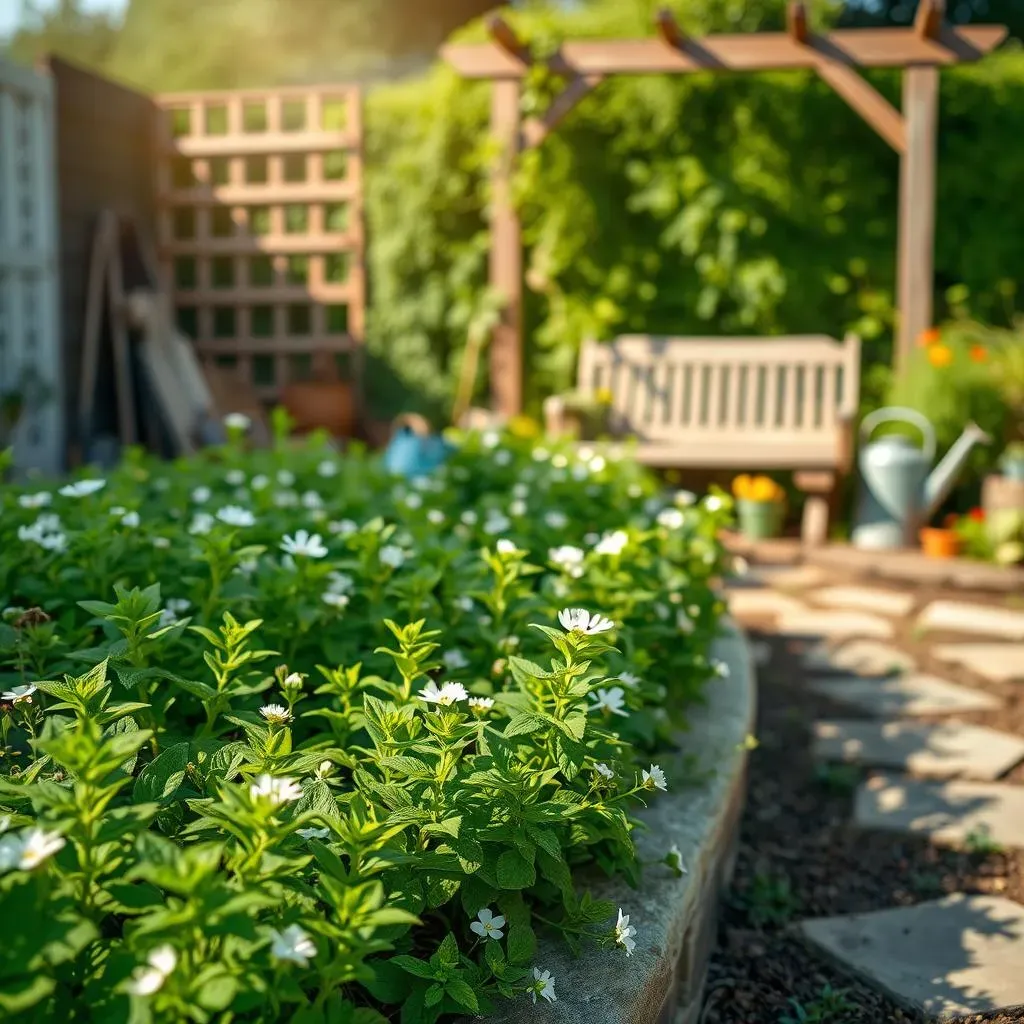Table of Contents
Imagine a garden overflowing with fragrant spearmint, ready to be harvested for your favorite cup of tea. Sounds idyllic, right? But achieving that lush, productive spearmint patch requires more than just planting seeds. The key to unlocking a thriving spearmint tea garden lies in understanding and mastering effective watering techniques. This article serves as your comprehensive guide to spearmint tea plant garden watering systems, taking you from basic watering strategies to advanced irrigation solutions. We'll explore optimal watering practices to ensure healthy growth, troubleshoot common problems like overwatering and underwatering, and delve into advanced systems that can automate the process for maximum efficiency. Beyond just watering, we'll also touch on essential maintenance practices to keep your spearmint thriving. Whether you're a seasoned gardener or just starting out, this guide provides the knowledge you need to cultivate a bountiful spearmint harvest, year after year. Prepare to transform your garden into a fragrant oasis of delicious spearmint tea!
Optimizing Your Spearmint Tea Plant Garden: Watering Strategies
Optimizing Your Spearmint Tea Plant Garden: Watering Strategies
Understanding Spearmint's Thirst
Spearmint, like most herbs, thrives on consistent moisture but hates soggy roots. Think of it like a Goldilocks situation – you need the soil to be "just right." Too dry, and your plants will wilt and struggle. Too wet, and they'll develop root rot, a nasty fungal infection that can quickly kill them. The key is to keep the soil evenly moist, not waterlogged. The best way to check is to stick your finger about an inch into the soil. If it feels dry, it's time to water. Simple, right?
Regular watering is crucial, especially during hot, dry spells. However, the frequency will depend on several factors, including your climate, soil type, and the size of your plants. Don't be afraid to experiment a little to find what works best for your garden. Remember, it’s always better to slightly underwater than overwater. Overwatering is a common mistake that can lead to a whole host of problems.
Factor | Impact on Watering Frequency |
|---|---|
Hot, sunny climate | More frequent watering |
Sandy soil | More frequent watering |
Clay soil | Less frequent watering |
Mature plants | Less frequent watering (but deeper watering) |
Watering Techniques for Optimal Growth
When you do water, aim for deep, infrequent watering rather than shallow, frequent watering. Deep watering encourages roots to grow deeper, making your plants more drought-tolerant. Imagine it like this: shallow watering only wets the surface, while deep watering reaches down to the roots, providing them with the moisture they need to thrive. Use a watering can with a rose head to gently distribute the water evenly around the base of your plants, avoiding getting the leaves wet. Wet leaves can increase the risk of fungal diseases.
Consider using mulch around your spearmint plants to help retain moisture and suppress weeds. Mulch acts like a natural insulator, keeping the soil cool and moist for longer. Organic mulches, such as straw or shredded bark, are ideal as they also improve soil health. Just make sure to keep the mulch a few inches away from the stems of your plants to prevent rot.
- Water deeply and infrequently.
- Avoid wetting the leaves.
- Use mulch to conserve moisture.
- Monitor soil moisture regularly.
Choosing the Right Watering System
For small spearmint gardens, a simple watering can might suffice. However, for larger gardens, a more efficient system may be beneficial. Drip irrigation systems, for example, deliver water directly to the roots, minimizing water waste and reducing the risk of leaf diseases. They’re also great for conserving water, which is a plus for both your plants and your wallet! Soaker hoses are another excellent option, providing a gentle and consistent supply of moisture. They’re easy to install and relatively inexpensive.
Ultimately, the best watering system for your spearmint tea garden will depend on your specific needs and preferences. Consider factors such as the size of your garden, your budget, and the time you have available for watering. Don't be afraid to experiment with different systems to find what works best for you and your precious spearmint plants. Remember, a happy plant is a productive plant!
Troubleshooting Common Spearmint Watering Problems
Troubleshooting Common Spearmint Watering Problems
Wilting and Yellowing Leaves: A Sign of Distress
Seeing your spearmint leaves droop or turn yellow is a major red flag. While it can sometimes indicate underwatering, it's more often a sign of overwatering, root rot, or even nutrient deficiencies. Overwatering suffocates the roots, preventing them from absorbing water and nutrients efficiently. Root rot, a fungal disease that thrives in consistently wet soil, can cause similar symptoms. Nutrient deficiencies, on the other hand, manifest as yellowing leaves due to lack of essential plant food. Carefully examine your plants; if the soil is constantly soggy, that's your culprit.
To address this issue, check your soil moisture. If it's waterlogged, improve drainage by adding organic matter like compost to loosen the soil. Ensure your pots have adequate drainage holes. If root rot is suspected, you might need to repot your plants in fresh, well-draining soil, removing any affected roots. If the problem persists, consider a soil test to rule out nutrient deficiencies.
Symptom | Possible Cause | Solution |
|---|---|---|
Wilting leaves | Underwatering or root rot | Adjust watering frequency; improve drainage; repot if necessary |
Yellowing leaves | Overwatering or nutrient deficiency | Improve drainage; conduct a soil test; fertilize if needed |
Soggy soil | Poor drainage | Amend soil with compost; ensure adequate drainage holes |
Slow Growth or Stunted Plants: A Sign of Neglect
If your spearmint plants are growing slowly or appear stunted, it could be due to inconsistent watering, leading to dehydration stress. Plants need a consistent supply of moisture to grow optimally. Infrequent or shallow watering only wets the top layer of soil, leaving the roots dry and unable to absorb nutrients. This can result in stunted growth and reduced yield. Think of it like trying to run a marathon on an empty stomach – it's just not going to work!
To remedy slow growth, establish a regular watering schedule. Water deeply and less frequently to encourage deep root growth. Mulch around your plants to help retain moisture and reduce the frequency of watering. Regularly monitor the soil moisture level, ensuring it remains consistently moist but not waterlogged. Remember, consistency is key when it comes to keeping your spearmint happy and productive.
- Establish a regular watering schedule.
- Water deeply and less frequently.
- Use mulch to retain moisture.
- Monitor soil moisture levels regularly.
Pest and Disease Problems: Unexpected Challenges
While improper watering itself doesn't directly cause pests and diseases, it can weaken your plants, making them more susceptible to attack. Stressed plants are less resilient and more vulnerable to various pests and diseases. Overwatering, in particular, creates a humid environment that favors the growth of fungal diseases. Pests such as aphids also thrive in moist conditions. A healthy plant, properly watered, is better equipped to fight off these intruders.
To prevent pest and disease problems, maintain good garden hygiene, removing any weeds or debris around your plants. Ensure good air circulation to prevent fungal diseases. If you notice any signs of pests or diseases, take appropriate action, such as using insecticidal soap or a fungicide. Always remember that prevention is better than cure, and proper watering is a crucial part of that prevention strategy. A healthy plant is a happy plant, and a happy plant is less likely to attract pests and diseases.
Advanced Spearmint Tea Plant Garden Watering Systems
Advanced Spearmint Tea Plant Garden Watering Systems
Drip Irrigation: Precision Watering for Spearmint
For serious spearmint enthusiasts with larger gardens, drip irrigation offers unparalleled control and efficiency. This system delivers water directly to the roots of your plants, minimizing evaporation and ensuring every drop counts. Think of it as a spa treatment for your spearmint – a gentle, consistent supply of moisture precisely where it’s needed most. You can customize the system to suit your garden's layout and the specific needs of your plants. Drip irrigation also helps prevent fungal diseases that thrive in consistently wet leaves, a common problem with overhead watering.
Setting up a drip irrigation system might seem daunting, but it's surprisingly straightforward. You'll need a water source, tubing, emitters (to deliver water), and potentially a timer for automated watering. There are numerous online resources and tutorials available to guide you through the installation process. Investing in a drip irrigation system is a worthwhile investment for anyone serious about growing a healthy and productive spearmint garden. The time and water savings alone make it a smart choice.
Drip Irrigation Component | Function |
|---|---|
Water Source | Provides water for the system |
Tubing | Distributes water to emitters |
Emitters | Deliver water to plant roots |
Timer (Optional) | Automates watering schedule |
Smart Watering Systems: Technology Meets Horticulture
For the tech-savvy gardener, smart watering systems offer the ultimate in convenience and precision. These systems utilize sensors to monitor soil moisture levels, automatically adjusting watering schedules based on real-time data. Imagine a system that knows exactly when your spearmint needs a drink, eliminating guesswork and ensuring optimal hydration. Many smart systems integrate with weather forecasts, adjusting watering schedules based on predicted rainfall. This not only saves water but also prevents overwatering, which can lead to root rot and other problems.
While the initial investment for a smart watering system might be higher than for other methods, the long-term benefits, including water conservation and reduced labor, make it a worthwhile investment. The ability to monitor your plants remotely through a smartphone app adds another layer of convenience. As technology advances, smart watering systems are becoming increasingly sophisticated and affordable, making them a viable option for even the most budget-conscious gardeners. It’s the future of gardening, and it’s here now!
- Soil moisture sensors for precise watering
- Integration with weather forecasts for adaptive watering
- Remote monitoring via smartphone app
- Automated scheduling for convenience
Maintaining a Thriving Spearmint Tea Garden: Beyond Watering
Maintaining a Thriving Spearmint Tea Garden: Beyond Watering
Soil Health and Nutrition: The Foundation of Success
While proper watering is crucial, the health of your soil forms the bedrock of a thriving spearmint garden. Think of your soil as the foundation of a house; a weak foundation leads to cracks and problems down the line. Healthy soil, rich in organic matter, provides essential nutrients and improves drainage, creating the ideal environment for your spearmint to flourish. Before planting, amend your soil with compost or other organic matter to improve its structure and fertility. Regularly testing your soil's pH can also help you identify and address any nutrient deficiencies. Remember, happy soil equals happy plants!
Beyond initial soil preparation, ongoing fertilization is key to maintaining nutrient levels. Spearmint is a relatively heavy feeder, so regular fertilization will promote vigorous growth and abundant leaf production. Use a balanced, slow-release fertilizer to provide a consistent supply of nutrients throughout the growing season. Avoid over-fertilizing, as this can harm your plants. A little goes a long way! Observe your plants closely – if they look vibrant and healthy, you're doing great. If they're showing signs of stress, you may need to adjust your fertilization strategy.
Soil Health Factor | Impact on Spearmint Growth | How to Improve |
|---|---|---|
Organic Matter | Improved drainage, nutrient retention | Add compost, aged manure |
Soil pH | Nutrient availability | Soil test; adjust with lime or sulfur |
Nutrient Levels | Plant vigor, leaf production | Balanced fertilizer application |
Pest and Disease Management: Protecting Your Investment
Even with optimal watering and soil conditions, your spearmint garden can still fall victim to pests and diseases. Regularly inspecting your plants for signs of infestation or disease is crucial for early detection and intervention. Common pests include aphids, spider mites, and whiteflies, while diseases like powdery mildew and root rot can also cause significant damage. Early detection is key to minimizing the impact of these issues. Prevention is always better than cure, so maintaining good garden hygiene is essential.
Implementing preventative measures, such as proper spacing between plants to improve air circulation, can help minimize the risk of disease. Regularly removing weeds and debris around your plants prevents pests from finding a home in your garden. If you do encounter pests or diseases, use appropriate organic control methods, such as insecticidal soap or neem oil, to avoid harming beneficial insects. Remember that a healthy plant is less susceptible to pests and diseases, so maintaining optimal growing conditions is your first line of defense.
- Regularly inspect plants for pests and diseases.
- Maintain good garden hygiene.
- Improve air circulation to prevent fungal diseases.
- Use organic pest and disease control methods.